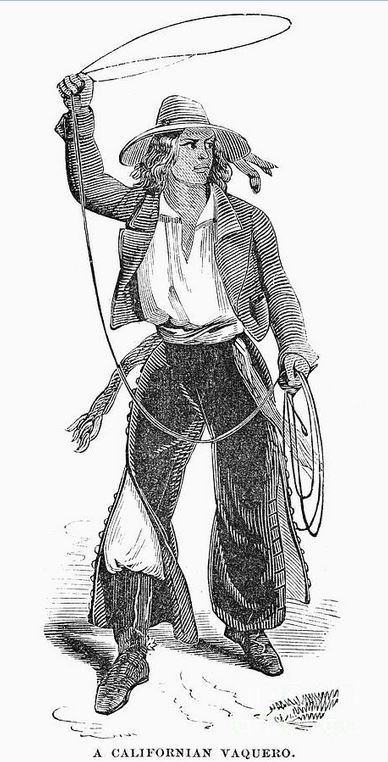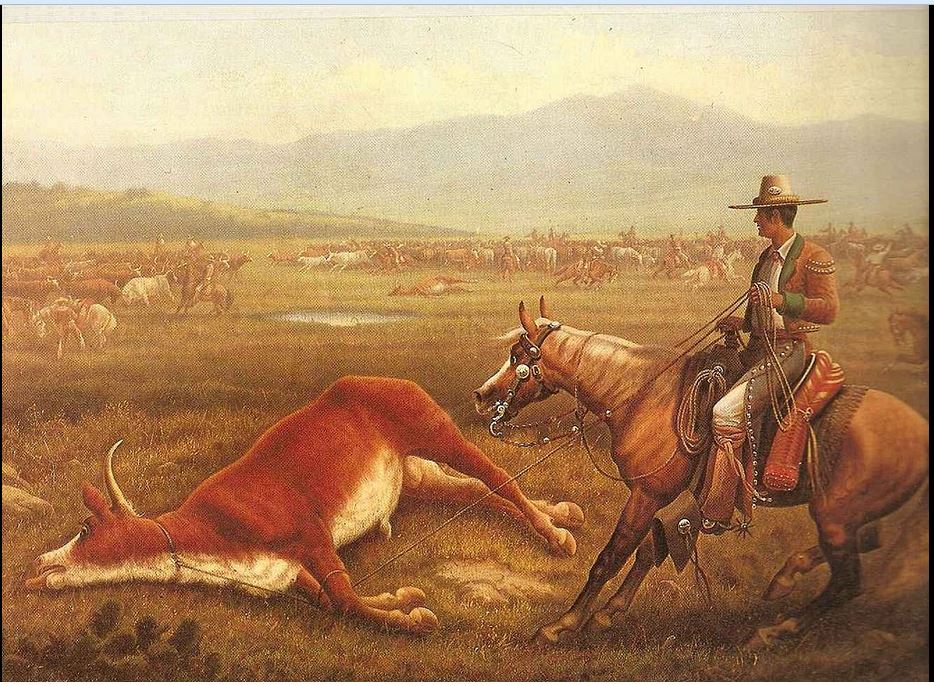A Vaquero in Noblesville
By: David Heighway, Hamilton County Historian
 Since the holiday Cinco de Mayo is coming up on Thursday, I thought it might be worthwhile to look at some of the Hispanic history of Noblesville, particularly the first known Mexican visitor. He came here only fifteen years after the battle that the day remembers, so he probably was a witness to the first Cinco de Mayo. We don’t know much about him except for what was written in the newspapers, but he left quite an impression while he was here. (Warning – some of the language and the ways of treating animals are not what we would do today.)
Since the holiday Cinco de Mayo is coming up on Thursday, I thought it might be worthwhile to look at some of the Hispanic history of Noblesville, particularly the first known Mexican visitor. He came here only fifteen years after the battle that the day remembers, so he probably was a witness to the first Cinco de Mayo. We don’t know much about him except for what was written in the newspapers, but he left quite an impression while he was here. (Warning – some of the language and the ways of treating animals are not what we would do today.)
Ledger, June 1, 1877
A HANDY MAN
A young Mexican, who wields the lasso and rattles the bones, has entertained the people on the streets with his dexterous manipulations, especially of the lasso, capturing dogs and halting boys in their headlong career by gracefully throwing about their limbs, at a distance of forty or fifty feet, the loop of an ordinary rope. He is also an expert in riding and training refractory horses and mules. A stubborn horse belonging to one of our butchers was persuaded to bear him gently on its back, and follow him about the streets. On Saturday, Dave Brock declared that one of his mules, then hitched to wagon, could not be ridden by anybody. This caused a smile to play upon the countenance of the young Mexican, who declared that he would ride any mule on the planet, including Brock’s, for five dollars. But Dave didn’t want to risk more than a dollar. By this time, a blind man with an organ had drawn a crowd about the east side of the square, the Mexican assisting by rattling the bones. The blind man sought a collection, but a number of those in the crowd wanted to see the mule throw the Mexican, and took up a counter collection, beating the blind man badly, raising three dollars, which was offered to the rattler of bones, if he would ride Dave’s mule. He consented, a saddle was procured, and the two hundred people left the blind man in his glory and proceeded to the grounds just southwest of the old fair ground, wither had gone the mule and the Mexican. Here matters were soon arranged, and during the utmost curiosity of the crowd, the man mounted the animal. And such “bucking”, rearing, and bounding no other mule ever went through with, the rider clinging to his back, laughing and waving his hat. Soon the mule found that he was mastered and trotted away as gently as a cow. The performance lasted ten minutes, and a more perfect reformation of mule stubbornness was never accomplished. Dismounting, our Mexican friend received his three dollars and strolled. But a number thought the mule might change its mind, and insisted that he should ride again. Accordingly he mounted the second time, and the animal moved as steadily as the best trained horse. After going about one hundred yards, direction was changed, and the rider “let the mule out”. It came toward the crowd, and halted as orderly as possible when the rider drew the reins. The reformation was complete. Dave Brock had been thrown by the animal “higher that a kite”, although Dave counts himself a good rider. And now a countryman rode it to the hitching rack without trouble. This Mexican is a handy man to have around.
 Ledger, June 8, 1877, p. 4
Ledger, June 8, 1877, p. 4
The Mexican, trainer of fractious animals and festive lariat slinger, has donned the garb of an Indian and plays his part with amazing aptness.
Ledger, June 15, 1877, p. 4
John, the Mexican, again distinguished himself on Tuesday as a rider. An immense mule belong to an young countryman with a black velvet coat was said to be very remarkable for jumping stiffed legged and landing riders over his head; especially so if anything the rattled was carried by the person on his back. John was challenged and accepted a proposition to ride for a reasonable collection; the inconsiderable sum of $1.25 was contributed by the crowd of two or three hundred people, and the intrepid Mexican mounted, armed with a string of sleigh bells and heavily spurred. The first clatter of bells sent the mule and the rider into the air; and thus for fifteen minutes the animal cavorted about the corner of Conner Street and the railroad, the rider clinging to his back in fine style, laughing, shouting, ringing the bells, and planting his spurs into the sides of the haughty mule. The cavorting was continued by the addition of a dollar to the collection. The show was equal to a circus, and during all of it, the Mexican maintained his reputation for staying with mule flesh.
Ledger, June 22, 1877, p. 1
[A quote from the Anderson Herald about a Sunday school excursion to Noblesville]
“Mexican John”, a Spanish halfbreed, who has been electrifying Noblesville for some time past with his wonderful proficiency in throwing the lasso, accompanied the excursion and afforded unbounded amusement to a large crowd of small boys, as well as those of larger growth, by exhibitions of his dexterity. “Mexican John” desires us to announce that in a few weeks he contemplates visiting Anderson, when he will take pleasure in riding any or all unmanageable colts, mules, or donkeys that may be brought him.
There is no record of the man after this time. Of course, the proper term to refer to him is vaquero, which is the Spanish word for “cowboy”. (It’s where the word “buckaroo” came from.) It would be interesting to learn what brought him from Mexico to Noblesville in the 1870’s. As it is, it’s still an interesting incident in Noblesville history.
